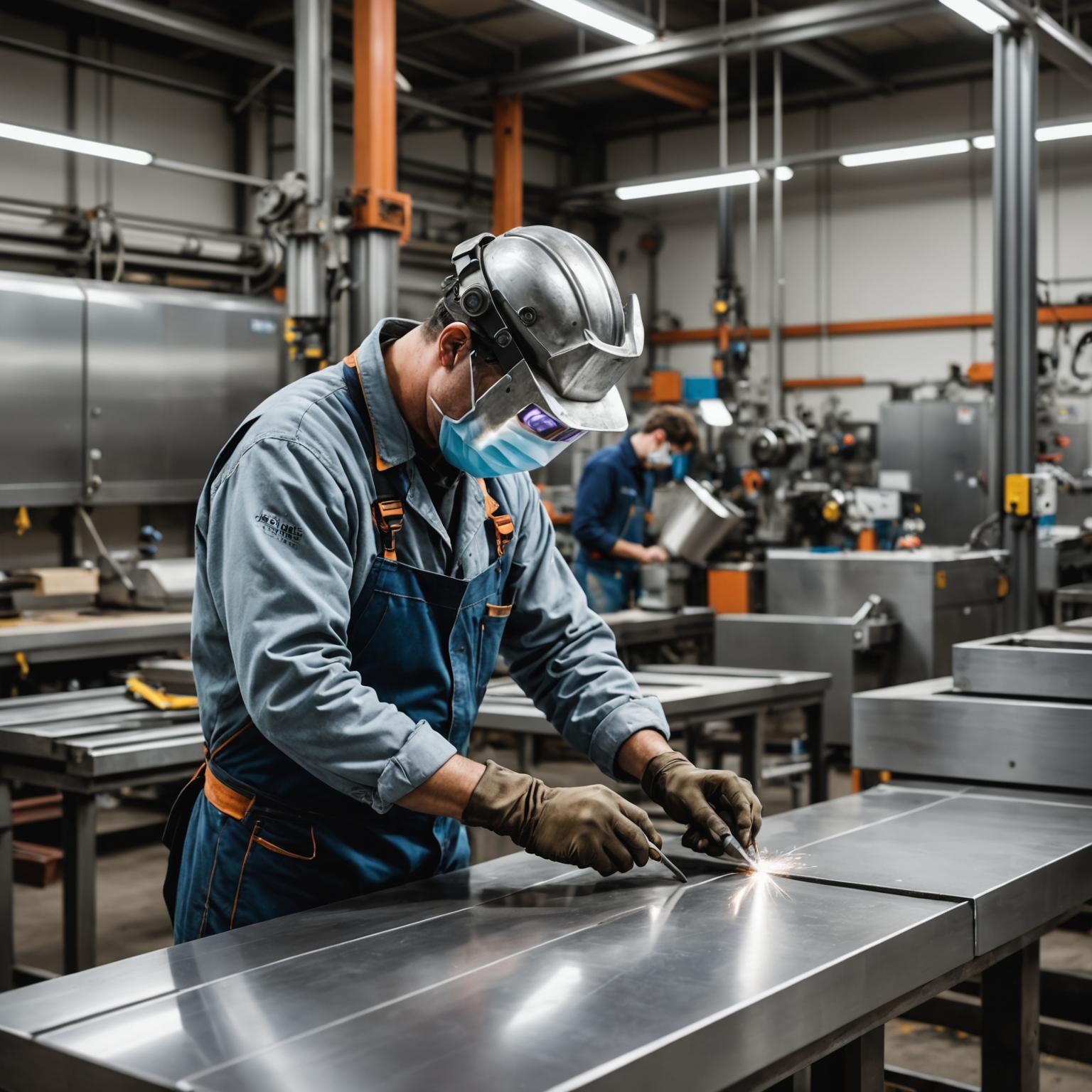Stainless steel, thanks to its exceptional corrosion resistance, strength, and aesthetics, has become an indispensable material in modern industry and life. Whether engineers designing structures or manufacturers processing products, mastering stainless steel's density, welding methods, and surface finishes is essential knowledge. This guide provides an in-depth understanding of these three key elements, helping you make the best decisions for your projects. 
(1) Density of stainless steel: the basis for weight calculation and selection
The density of stainless steel is a key parameter in calculating its weight, which directly affects material cost, structural design and load calculation.
Common density values : Generally, the density of stainless steel ranges from 7.9 to 8.1 g/cm³ , which is about 1.5 times that of carbon steel. The most commonly used 304 and 316 stainless steels have a density of approximately 7.93 g/cm³ .
Calculation formula :
Weight (kg) = Density (g/cm³) × Volume (cm³) ÷ 1000
For boards: Weight (kg) = Length (m) × Width (m) × Thickness (mm) × Density (g/cm³)
*Example: Calculate the weight of a 1m × 2m × 3mm 304 stainless steel plate: 1 × 2 × 3 × 7.93 = 47.58 kg*
Influencing factors : The density of different grades varies slightly due to the different content of alloying elements (such as nickel, chromium, and molybdenum). For example, the density of 316 stainless steel containing molybdenum is slightly higher than that of 304.
Tip : Knowing density accurately can help you avoid material waste and cost overruns during procurement and design.
(II) Stainless steel welding methods: How to achieve strong and durable connections
Welding stainless steel is more demanding than welding ordinary carbon steel, requiring specific techniques and processes to maintain its corrosion resistance.
TIG welding (Tungsten Inert Gas Welding) :
Features : Uses non-consumable tungsten electrode and inert gas (usually argon) for protection.
Advantages : high-quality welds, beautiful appearance, no spatter, small heat-affected zone, and the ability to maintain the corrosion resistance of stainless steel to the greatest extent.
Application : Most suitable for thin plates, pipes and occasions with extremely high requirements on appearance and quality, such as food equipment, medical equipment, and architectural decoration.
MIG/MAG welding (metal inert/active gas shielded welding) :
Features : Use consumable wire as electrode and protected by gas.
Advantages : fast welding speed, high production efficiency, suitable for automation.
Application : More suitable for welding medium and thick plates, often used in mass production and large-scale structure manufacturing.
Other methods : Metal arc welding (SMAW) is suitable for on-site operations and maintenance, but requires a lot of cleaning work; laser welding has extremely high precision and is used in high-tech fields.
Key to success : Regardless of the method used, using suitable welding materials, ensuring a clean environment and providing good gas protection are prerequisites for preventing oxidation and ensuring corrosion resistance of the weld.
(3) Stainless steel polishing process: creating a mirror-smooth surface
Polishing not only improves the aesthetics of stainless steel, but also enhances its corrosion resistance by forming a denser chromium oxide film.
Mechanical polishing :
Process : Grinding through a series of gradually finer abrasive pastes or grinding wheels, from coarse grinding to fine grinding, and finally achieving the required surface finish (such as BA, 8K mirror).
Advantages : relatively low equipment investment and strong applicability.
Disadvantages : High labor intensity, high technical requirements for workers, and may result in uneven material removal.
Electrolytic polishing (electrochemical polishing) :
Process : The workpiece acts as the anode and is immersed in a specific electrolyte, which is energized. The electrochemical reaction selectively dissolves the microscopic surface bumps, resulting in a smooth and shiny finish.
Advantages : stress-free and scratch-free surface, long-lasting gloss; able to process workpieces with complex shapes; better corrosion resistance.
Disadvantages : Large initial equipment investment and more precise process control requirements.
How to choose? For simple shapes and those seeking a very high mirror finish, mechanical polishing is the way to go. For complex parts, medical or food-grade applications requiring high corrosion resistance and no residue, electrolytic polishing is the best choice .
Conclusion
Knowledge of stainless steel density , welding , and finishing is crucial to ensuring a successful project. From accurately calculating costs to achieving strong and reliable connections to achieving a flawless surface, every step is crucial.
Span International not only provides high-quality stainless steel materials in a variety of grades and specifications, but also has a professional technical team that can provide comprehensive support for your project from material selection to processing technology .
Contact us today for a free technical consultation and quote!








